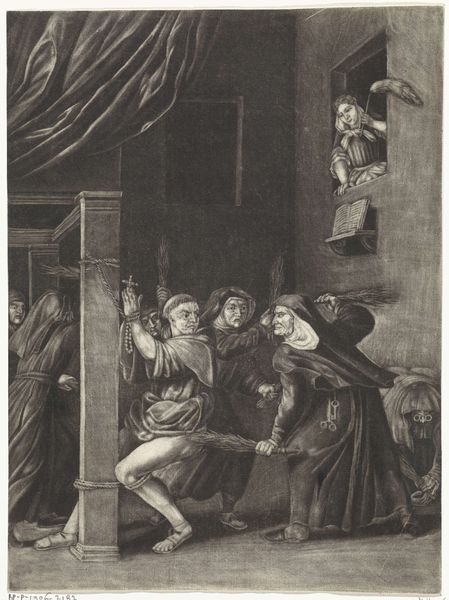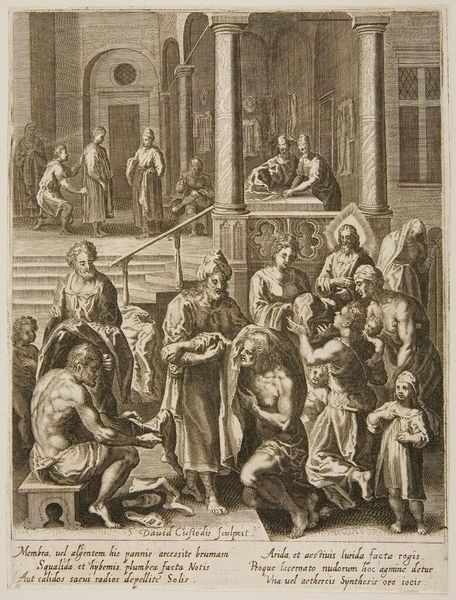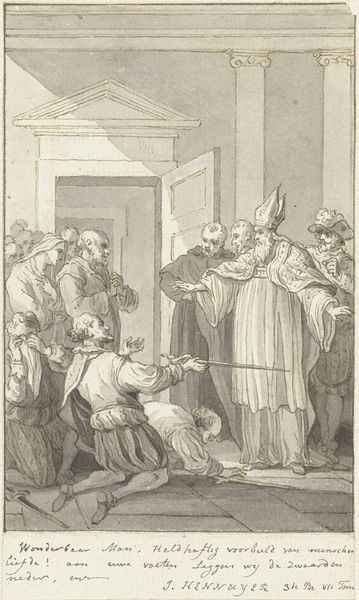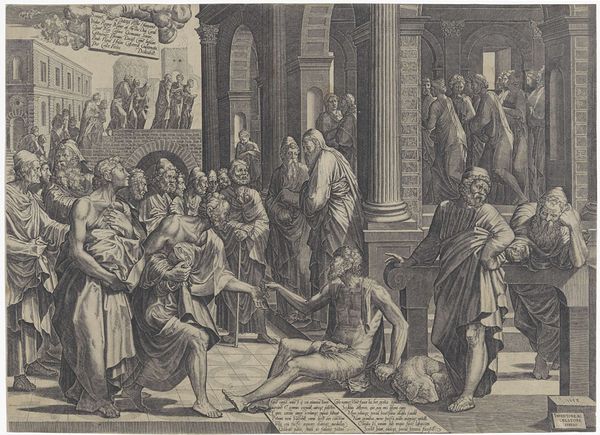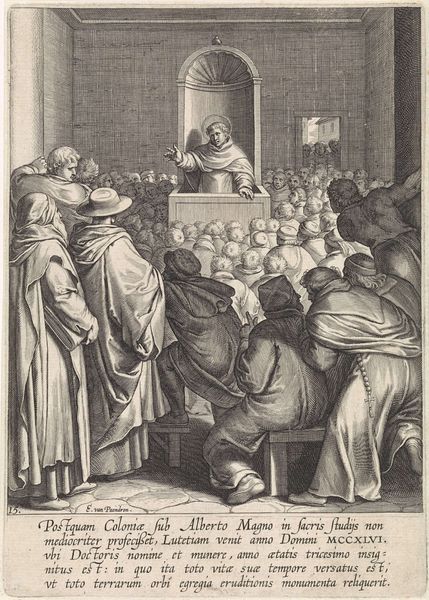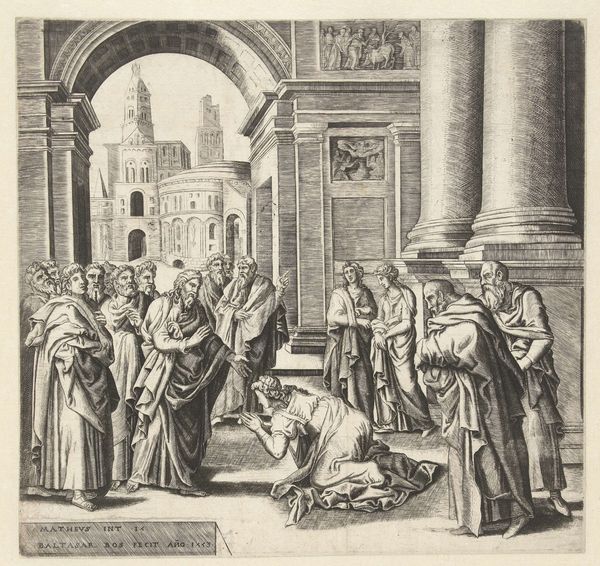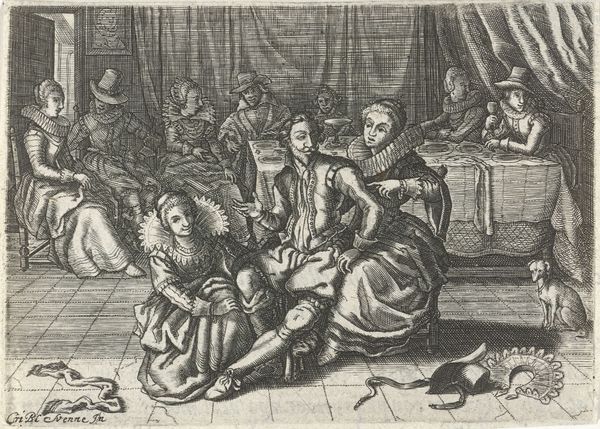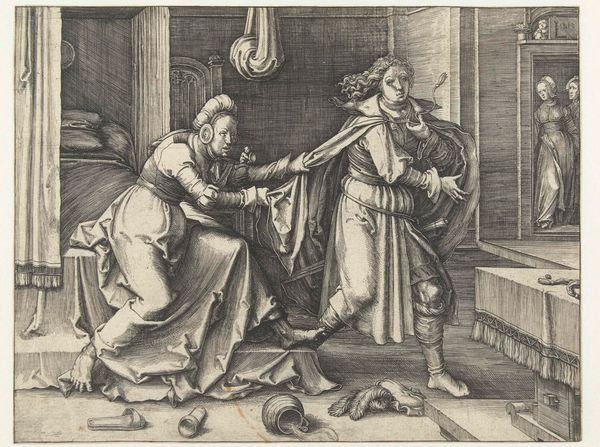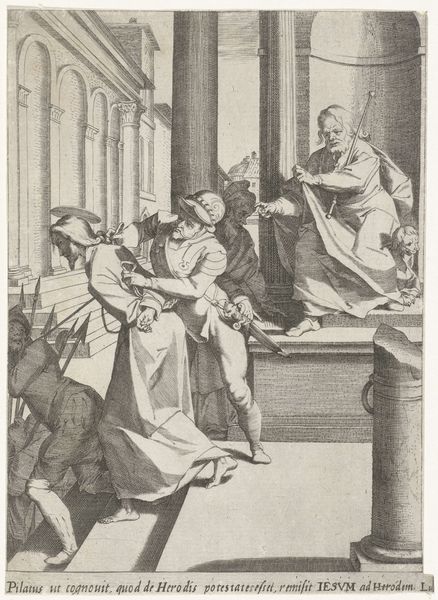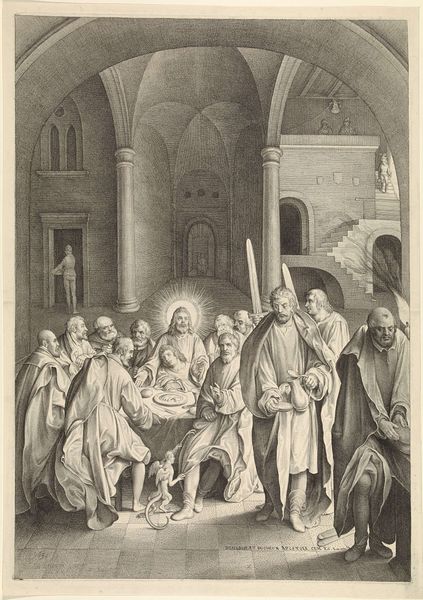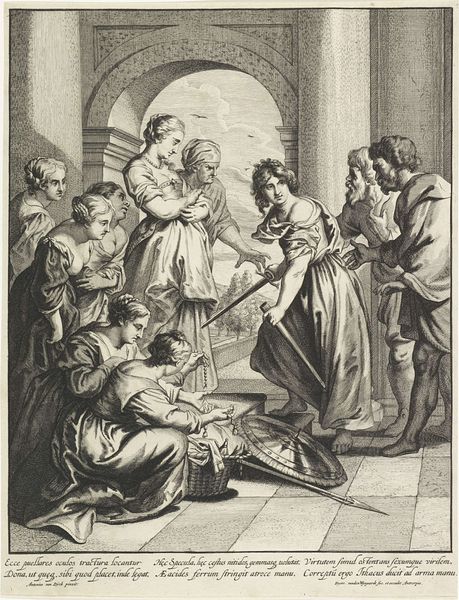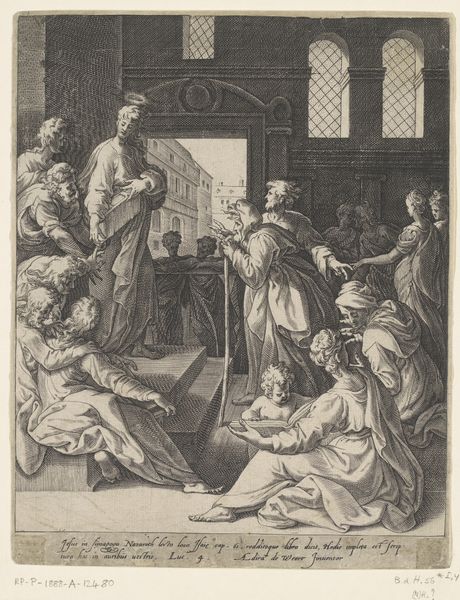
painting, oil-paint
#
portrait
#
venetian-painting
#
narrative-art
#
painting
#
oil-paint
#
dog
#
perspective
#
figuration
#
historical fashion
#
group-portraits
#
genre-painting
#
rococo
Dimensions: 49 x 60 cm
Copyright: Public domain
Curator: Take a look at "The Fortune Teller," painted around 1750 by Pietro Longhi, a master of Venetian genre scenes. Editor: The mood is set through a sort of hushed mystery, wouldn't you say? The almost theatrical grouping of figures pulls the eye deep into the pictorial space. The colours, rendered delicately in oil paint, give a glimpse of life, frozen in time. Curator: Absolutely, but what’s striking is Longhi’s careful arrangement that allows for a depiction of a slice of Venetian society. Note the materials - their clothing, a signifier of status, produced through the intricate labor of Venetian textile workshops. The painting itself acts as a commodity, bought and displayed, mirroring the scene it captures. Editor: Indeed. Compositionally, there's an interesting contrast between the shadowy background and the figures bathed in a diffused light. Observe how Longhi employs the fall of light to bring forth the different figures from this diverse assembly. There's almost a cinematic narrative feel, don't you agree? Curator: I think we can certainly draw that line. The very act of fortune telling itself relies on spectacle, deception, and commodity exchange. The clothing, their poses, all indicate the status of people who consume those experiences and feed into the narrative that they are better than those producing things. The art itself is a commodity that participates in this exchange. Editor: Notice too the formal mastery; the subtle gradation of color to define volume and form, or that dog almost as a silent observer in the far left side of the scene; its place gives the rest of the image the intended sense of balanced harmony and visual unity. Curator: Longhi is critiquing that consumption and those structures. He turns what may appear on the surface as entertainment into something where it offers critical commentary on Venice as a city caught in a cycle of class division and cultural production. Editor: A truly nuanced picture, both as a visual construct and as a mirror reflecting societal layers through light, color, and compositional brilliance. Curator: Ultimately, it provides an artistic reflection on the socio-economic conditions of 18th-century Venice.
Comments
No comments
Be the first to comment and join the conversation on the ultimate creative platform.
